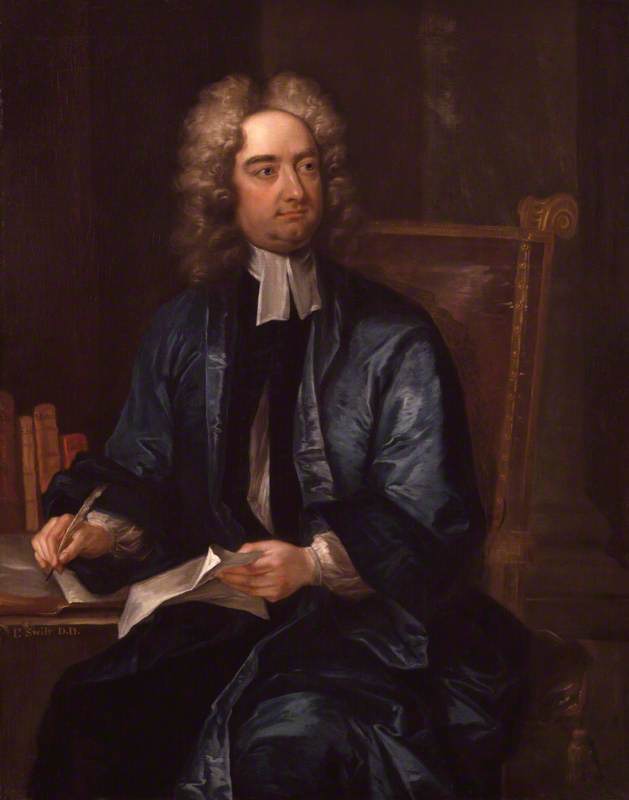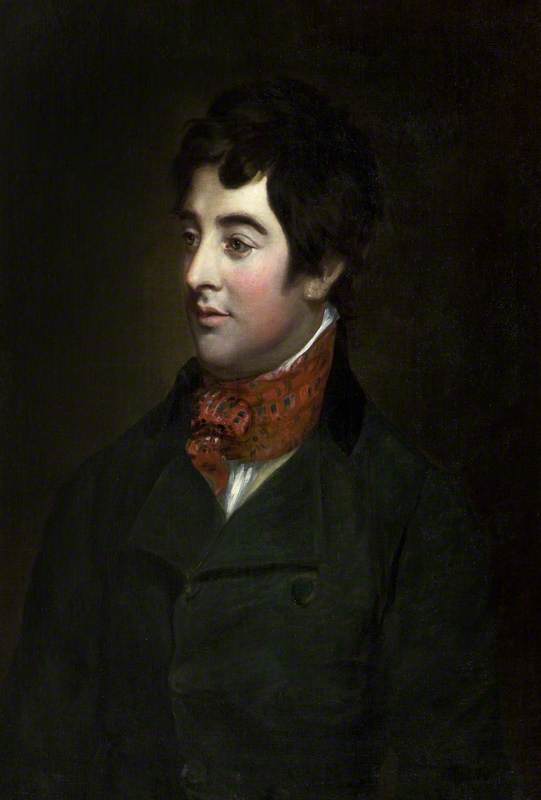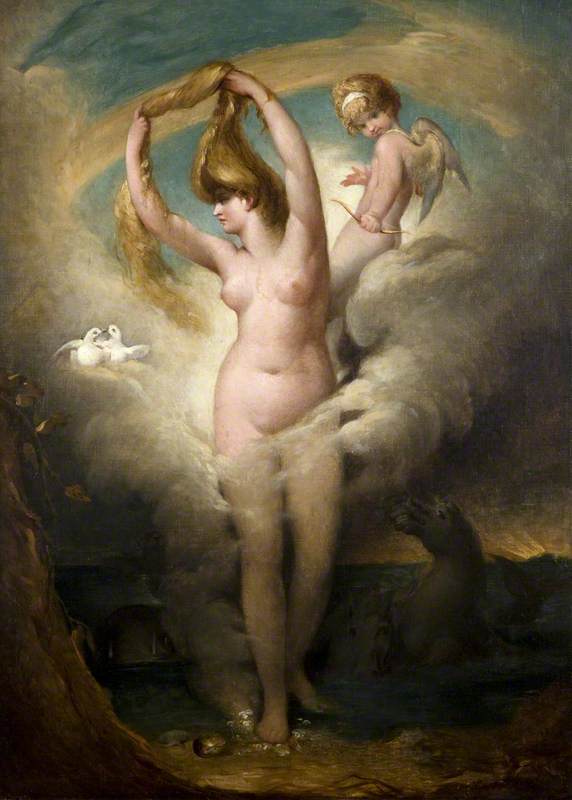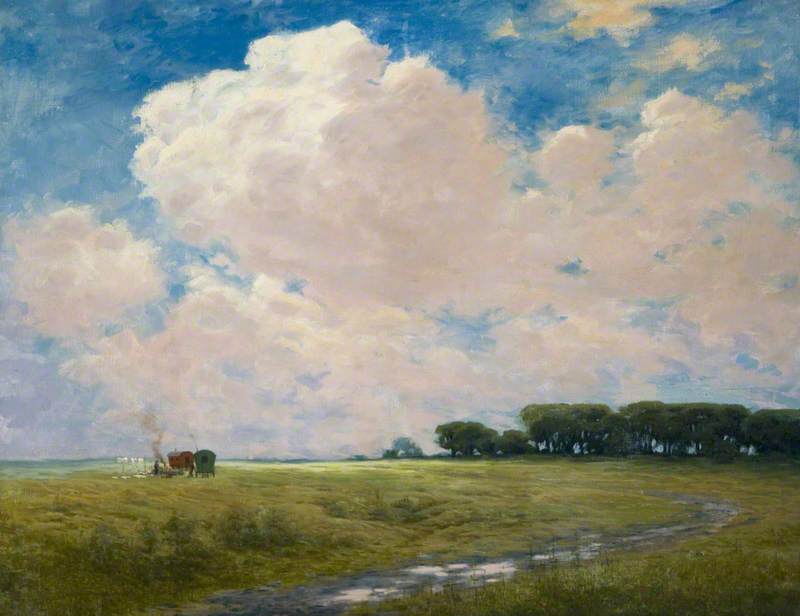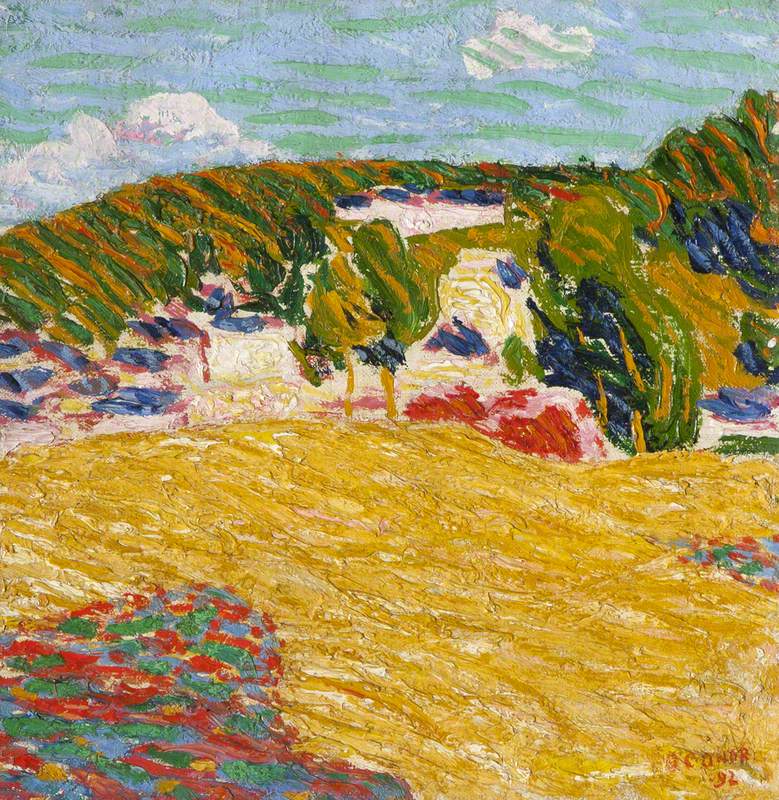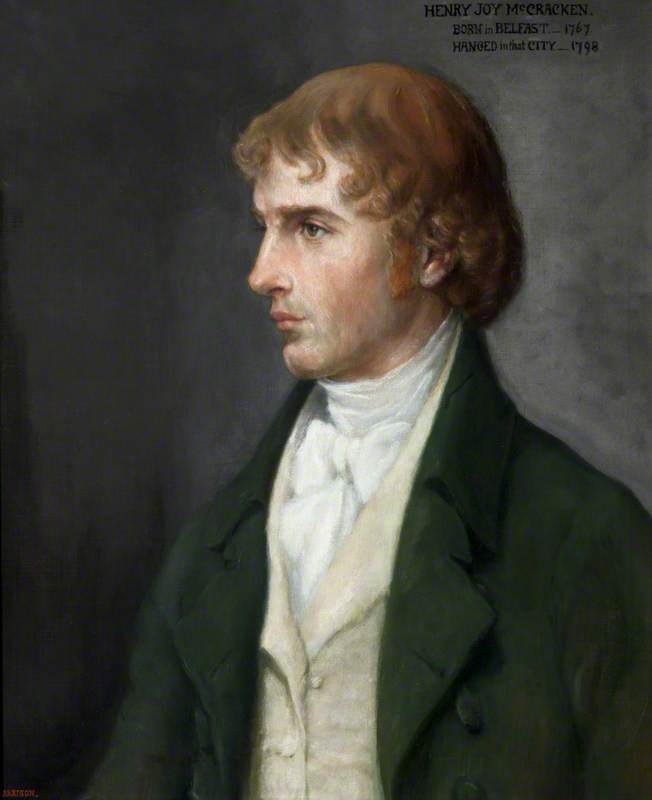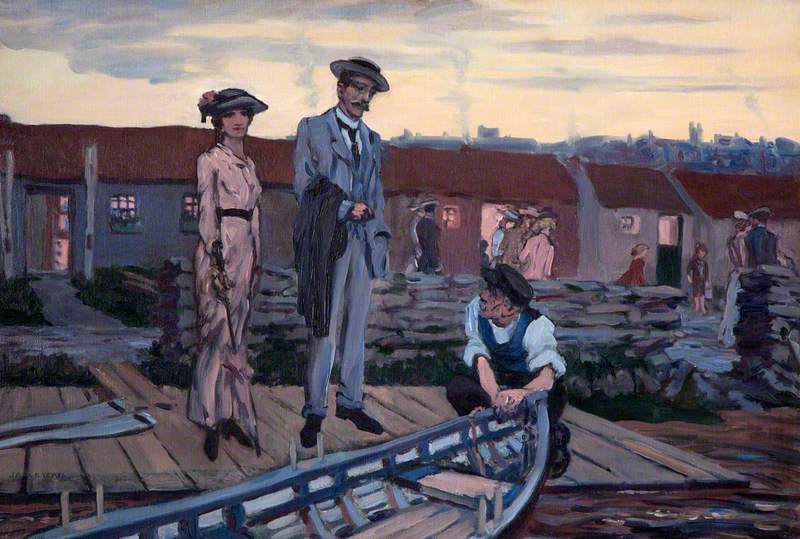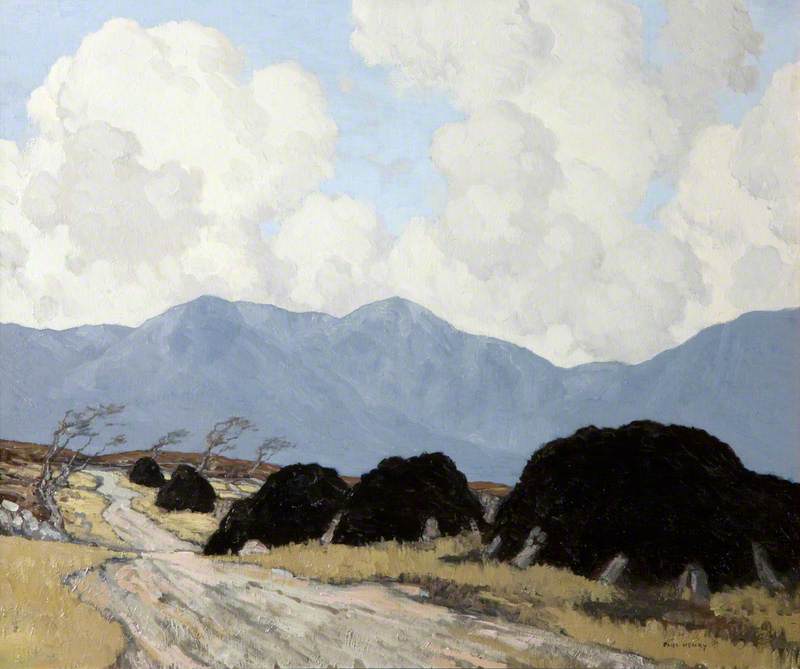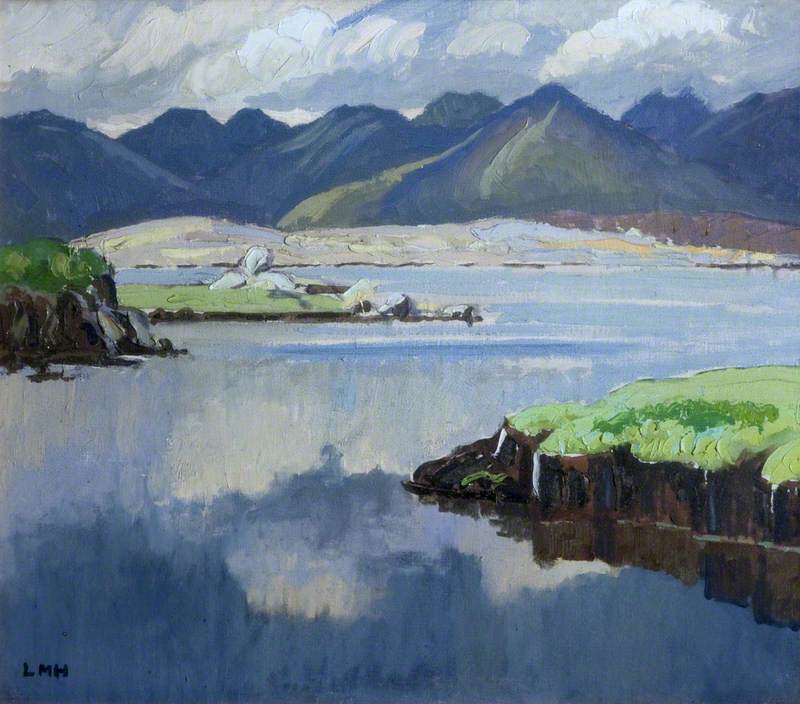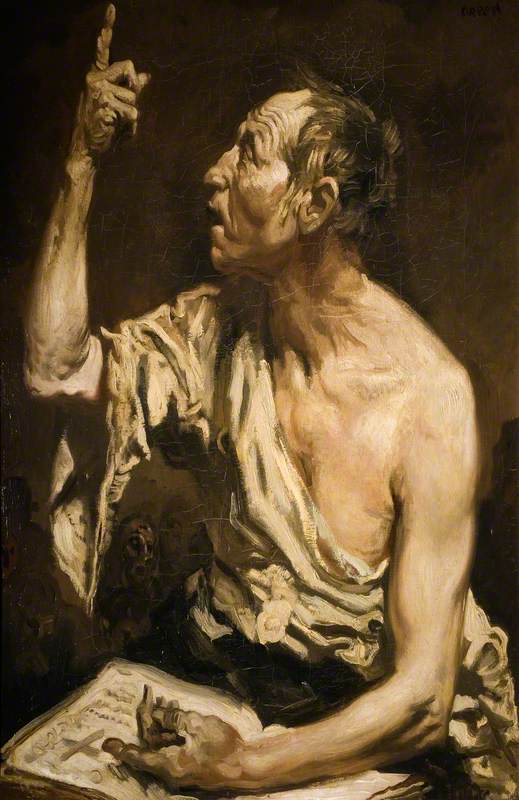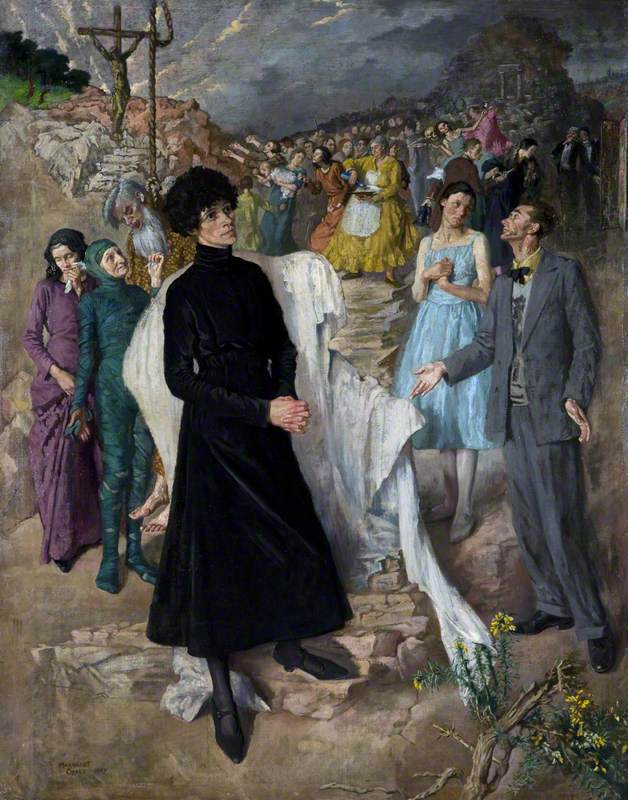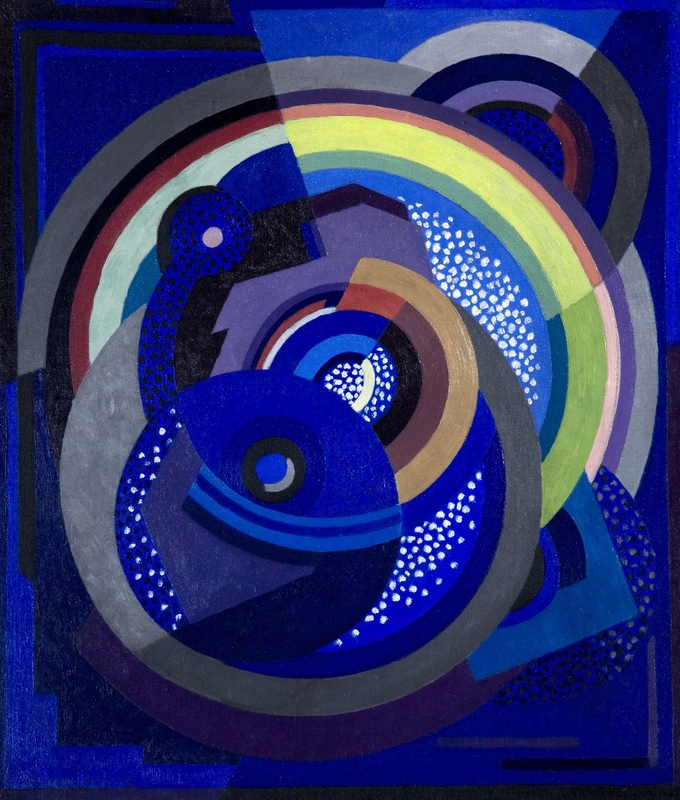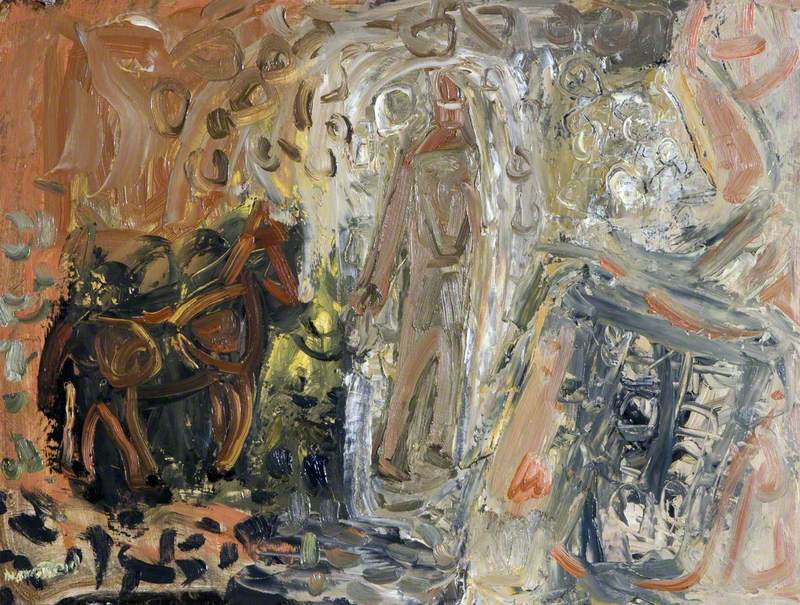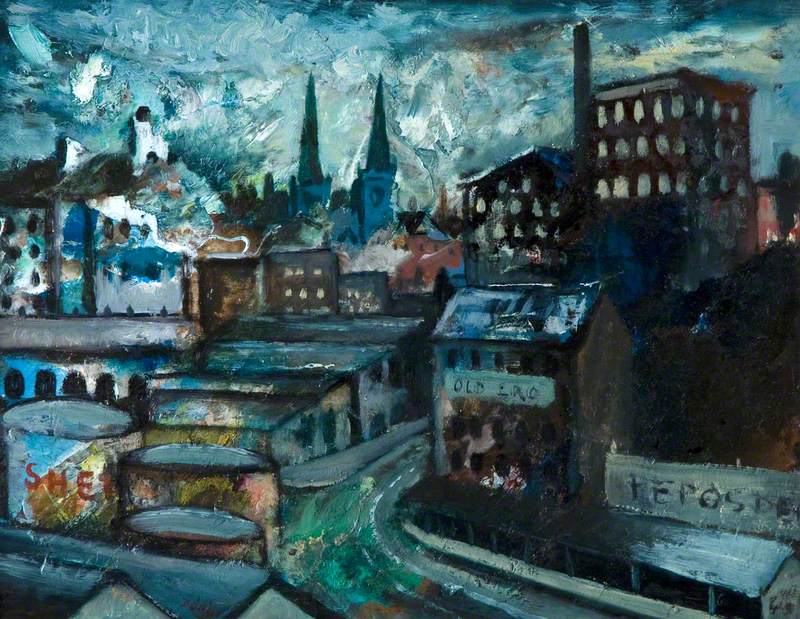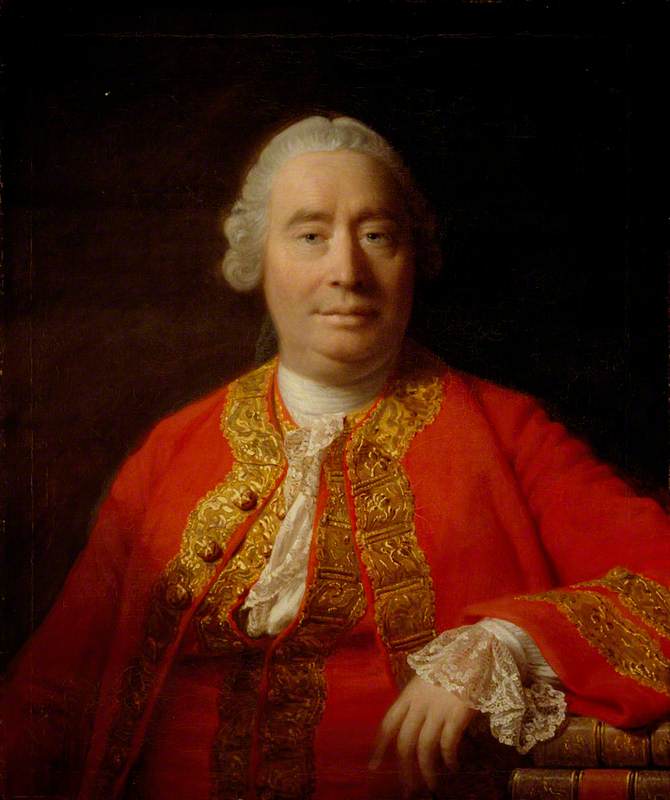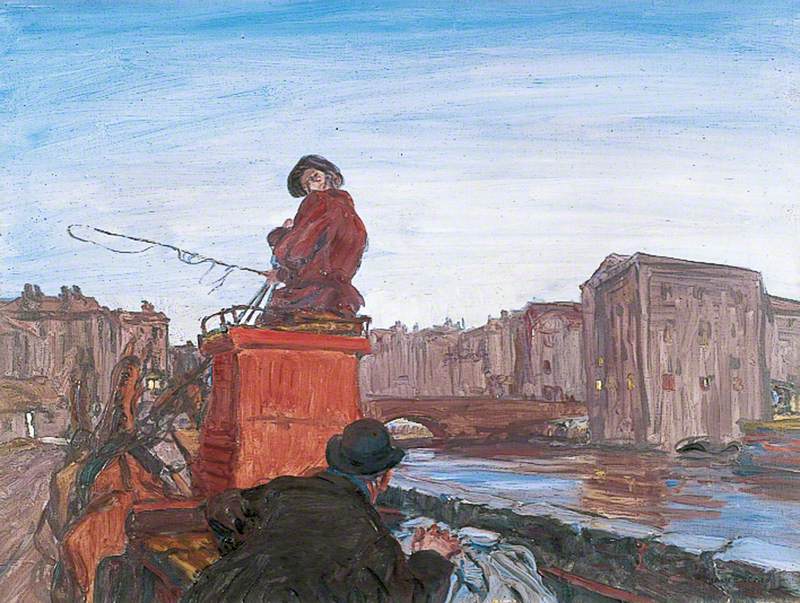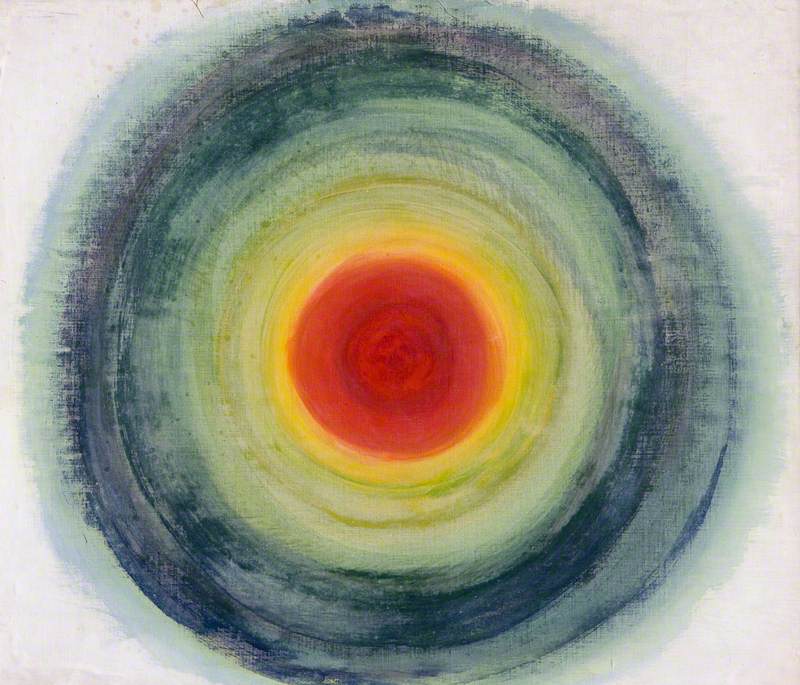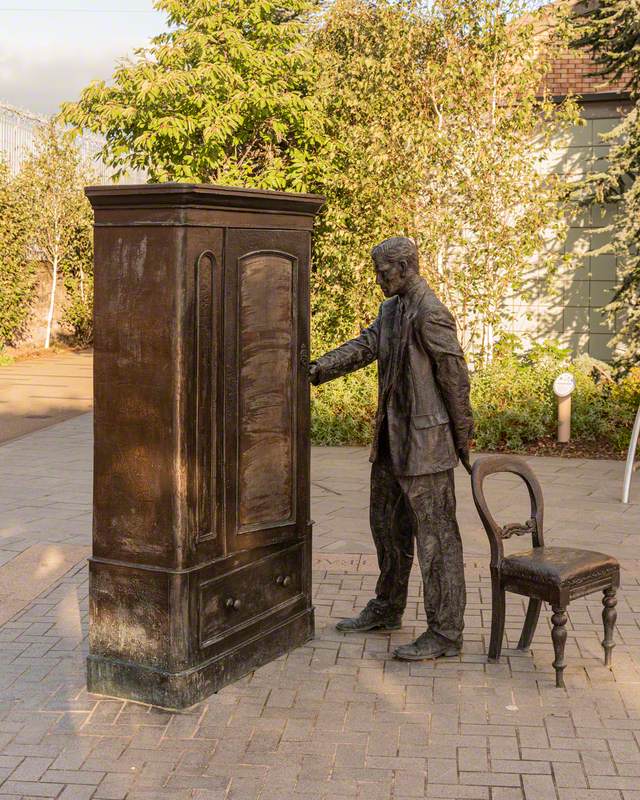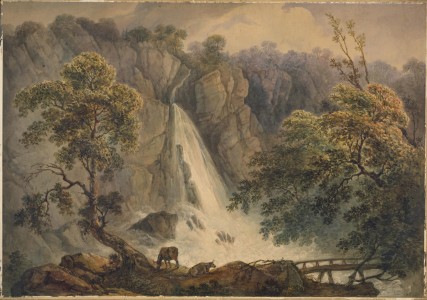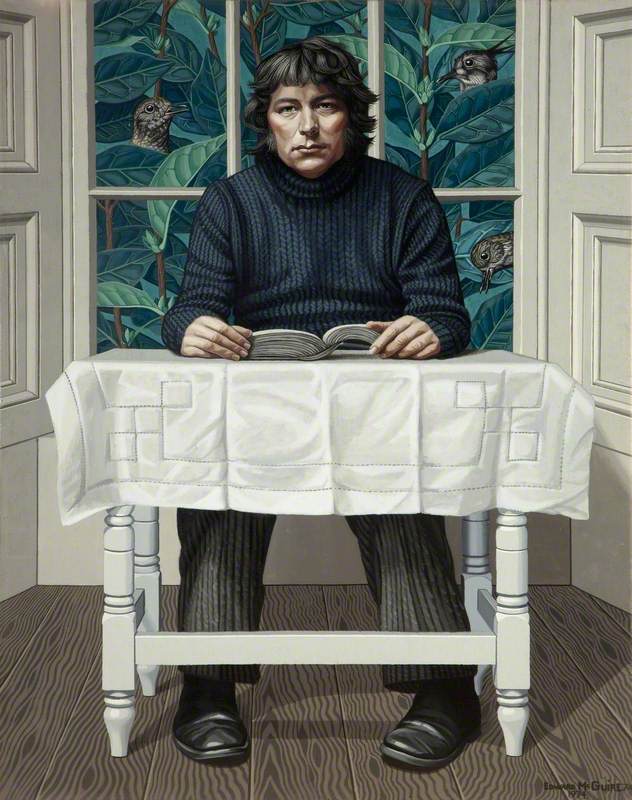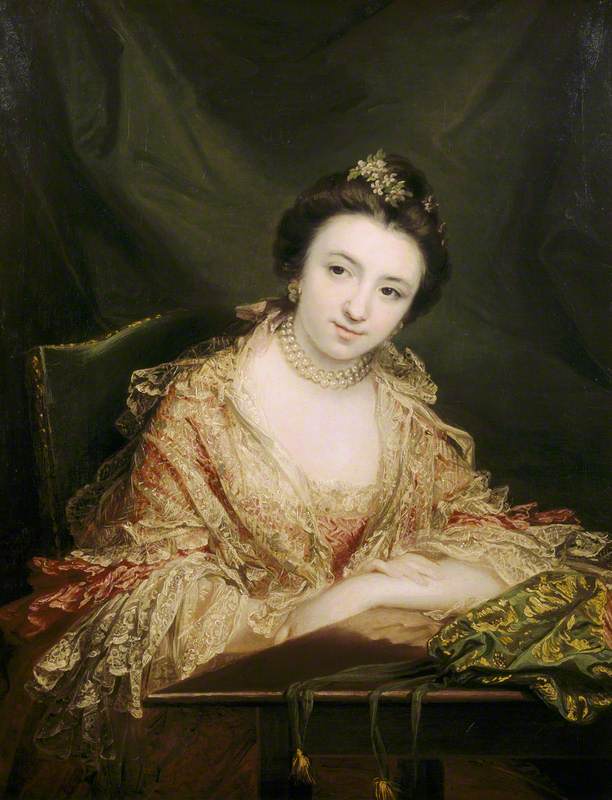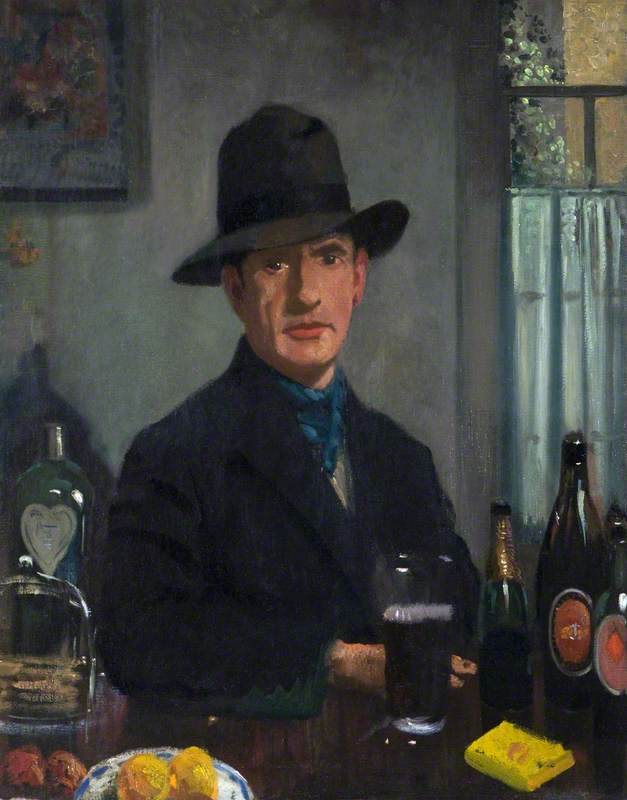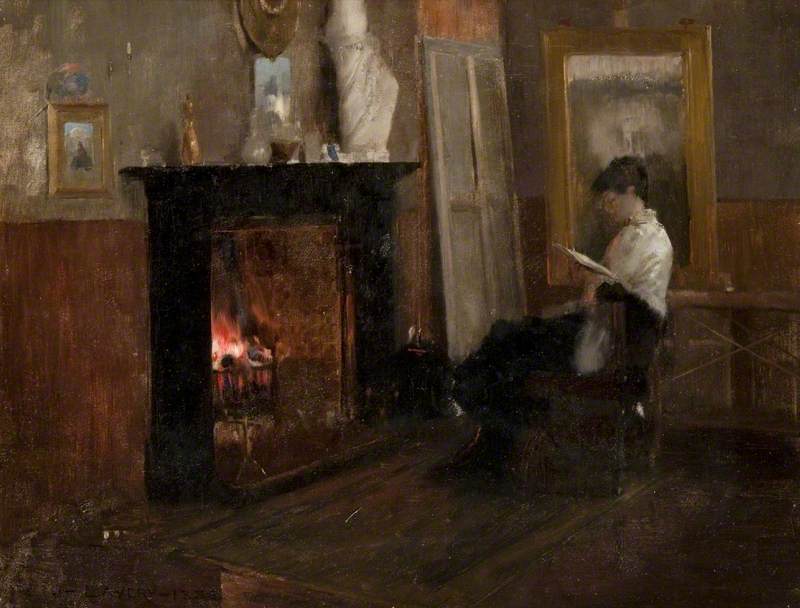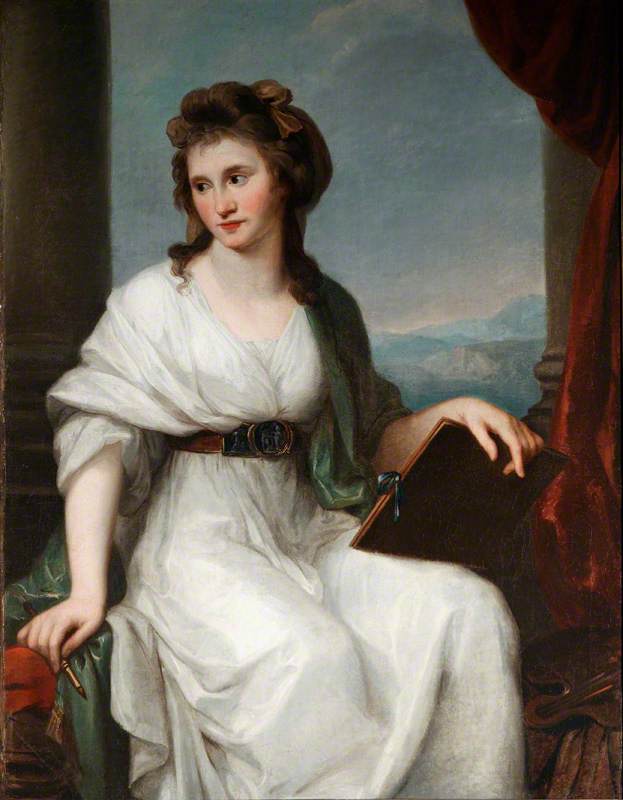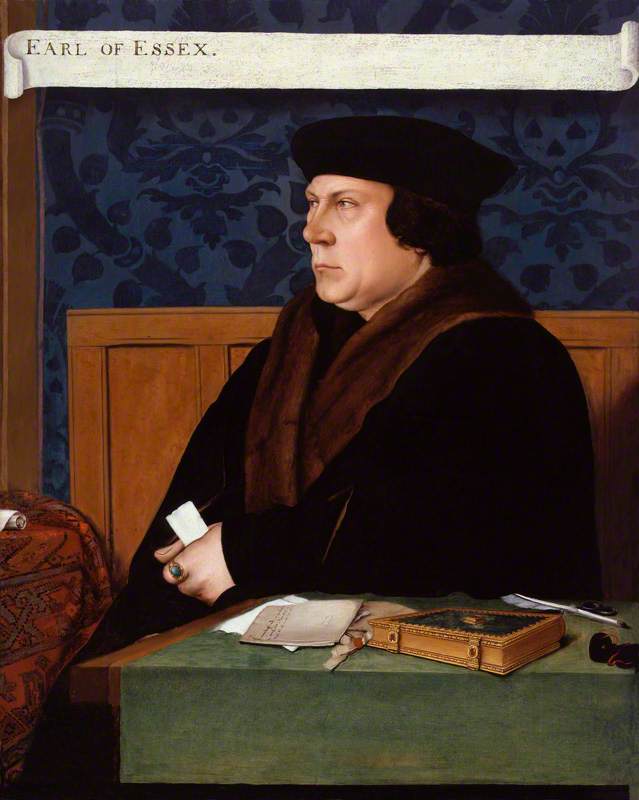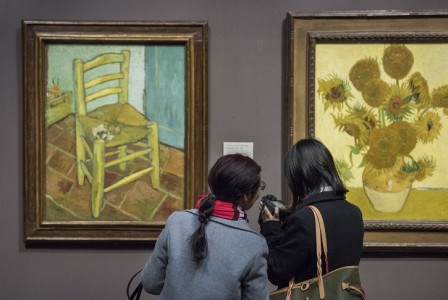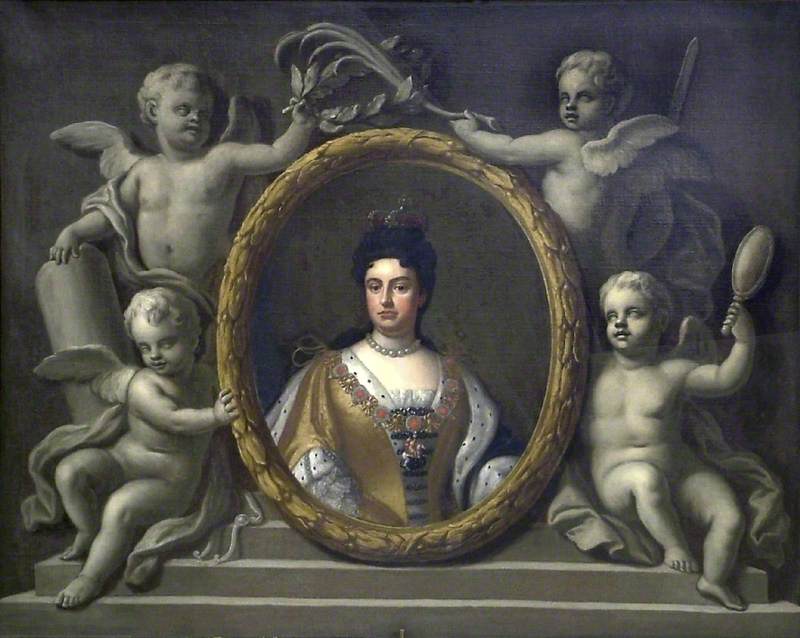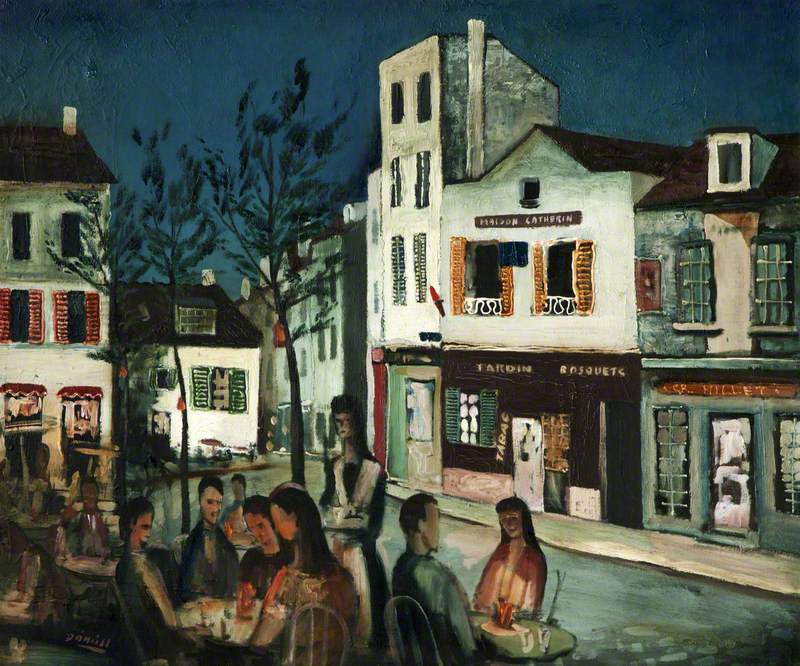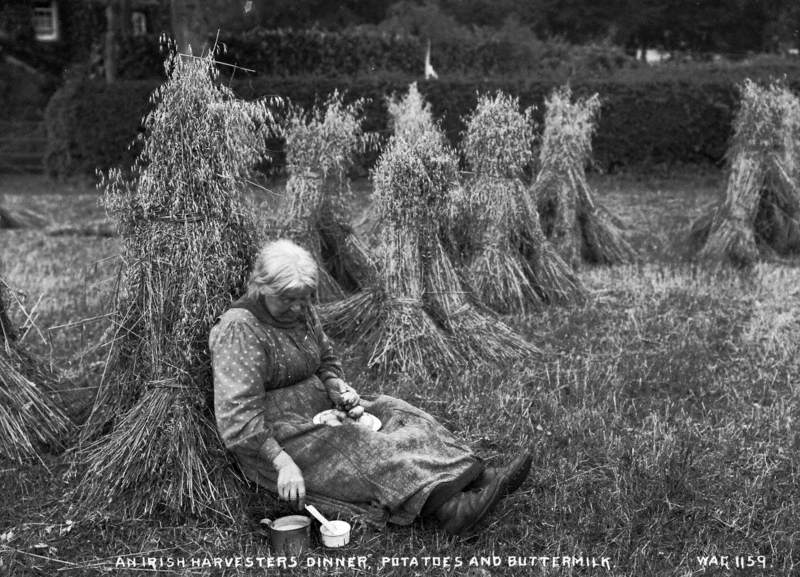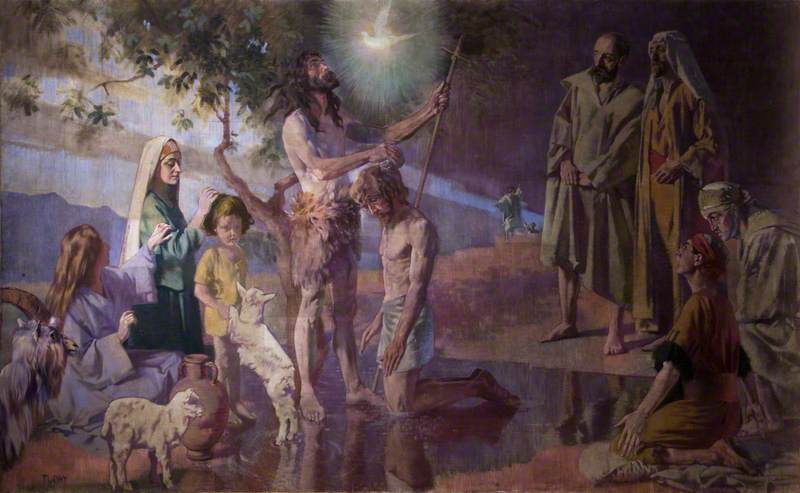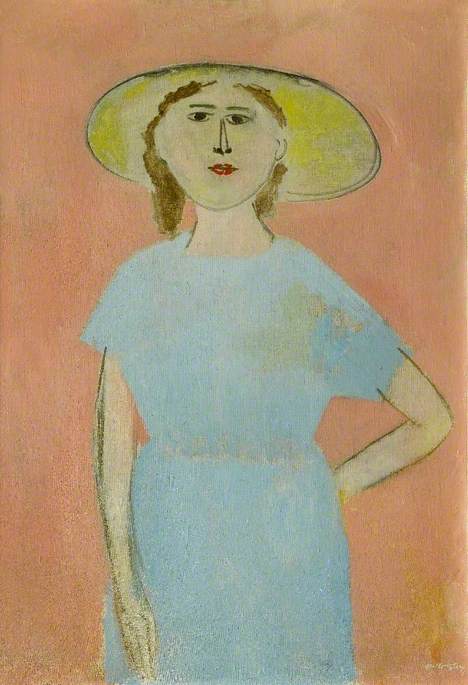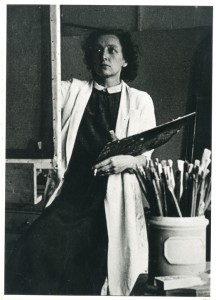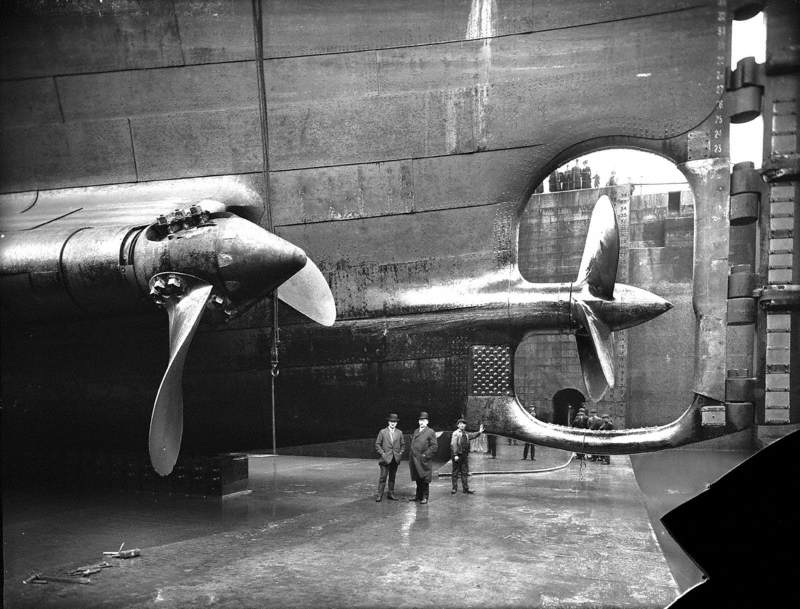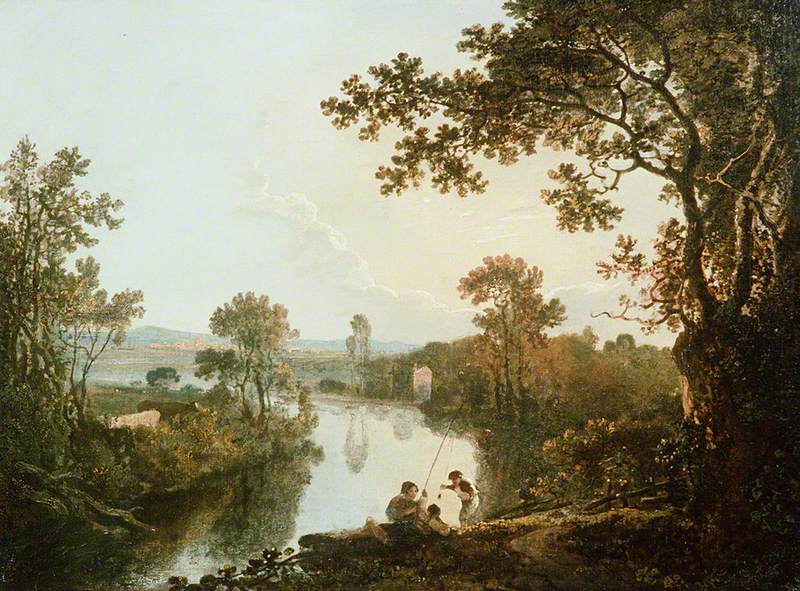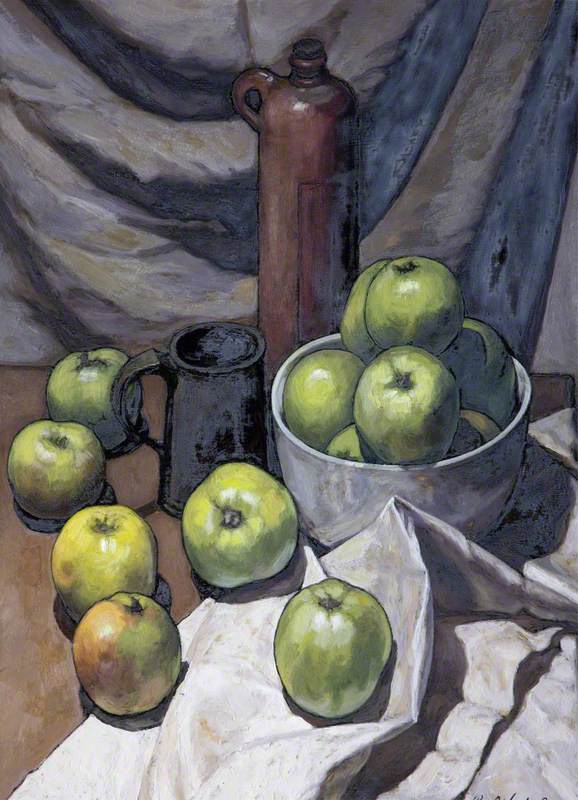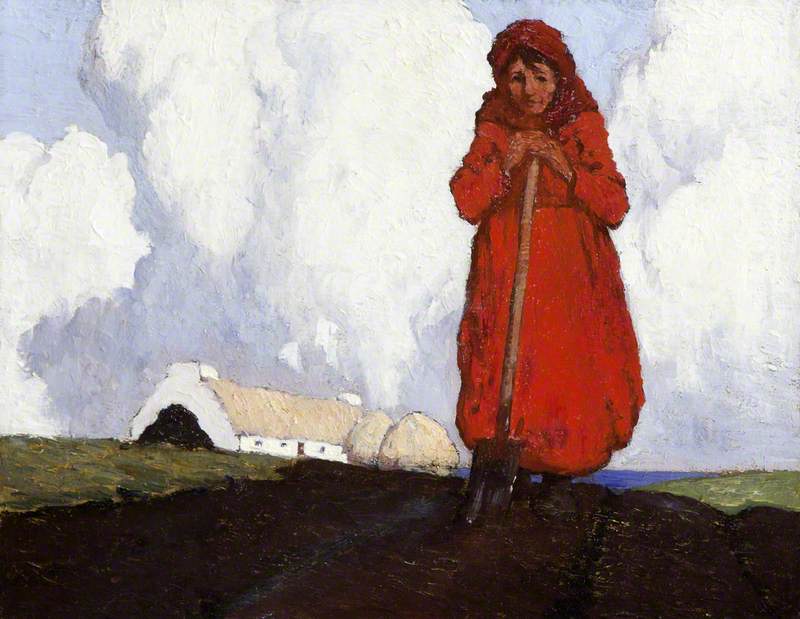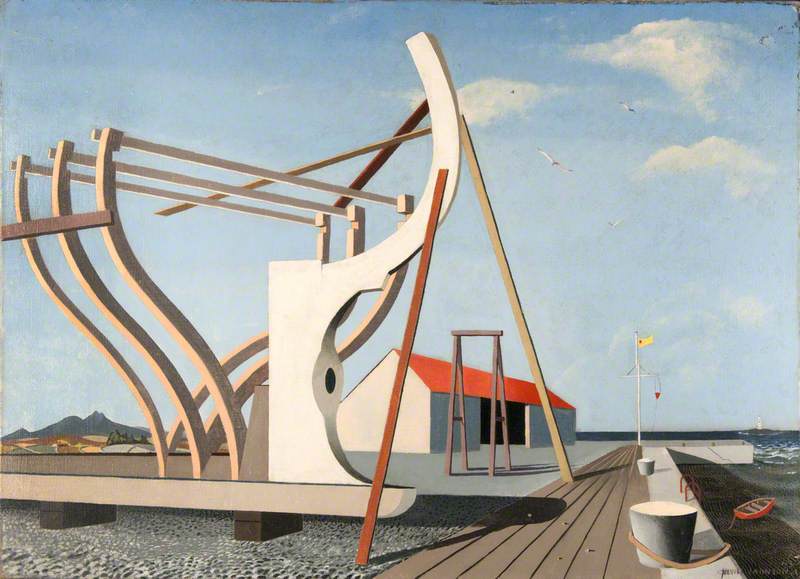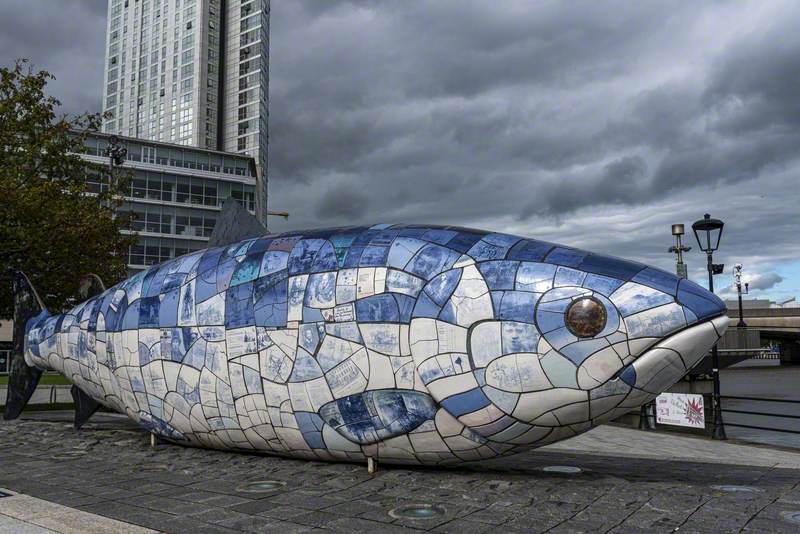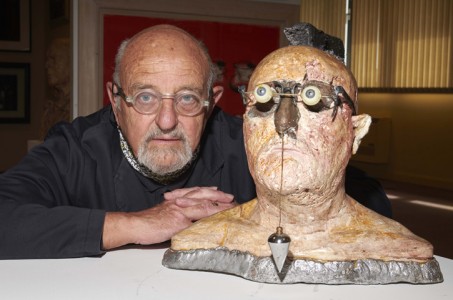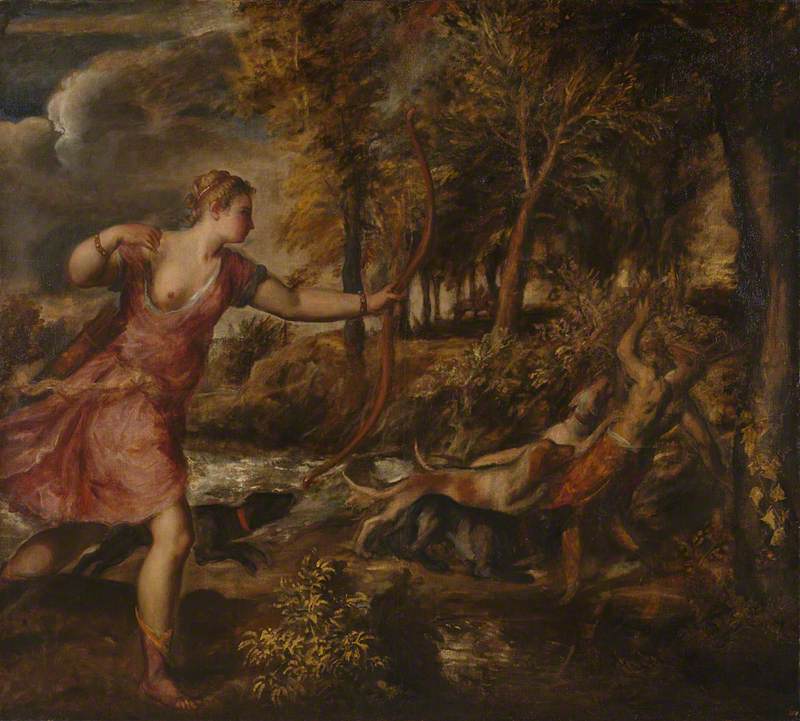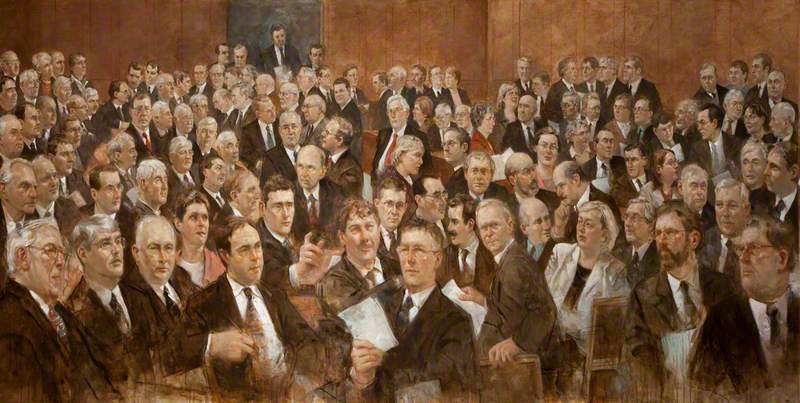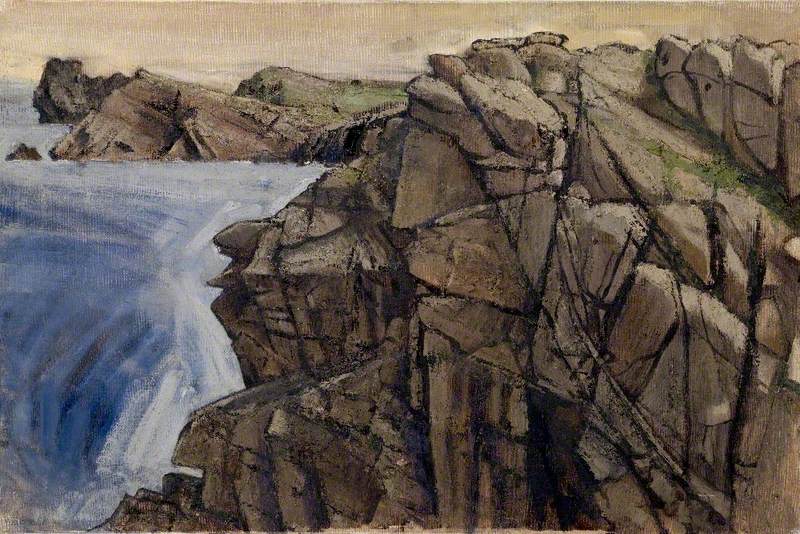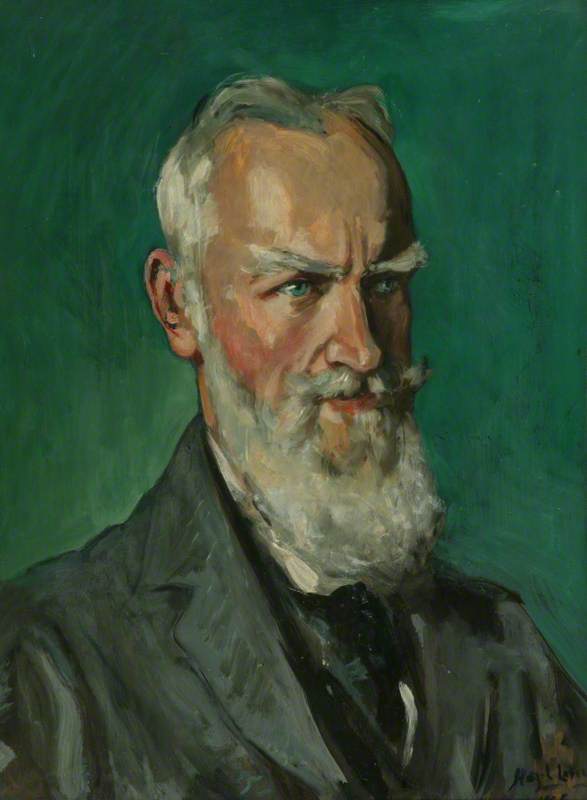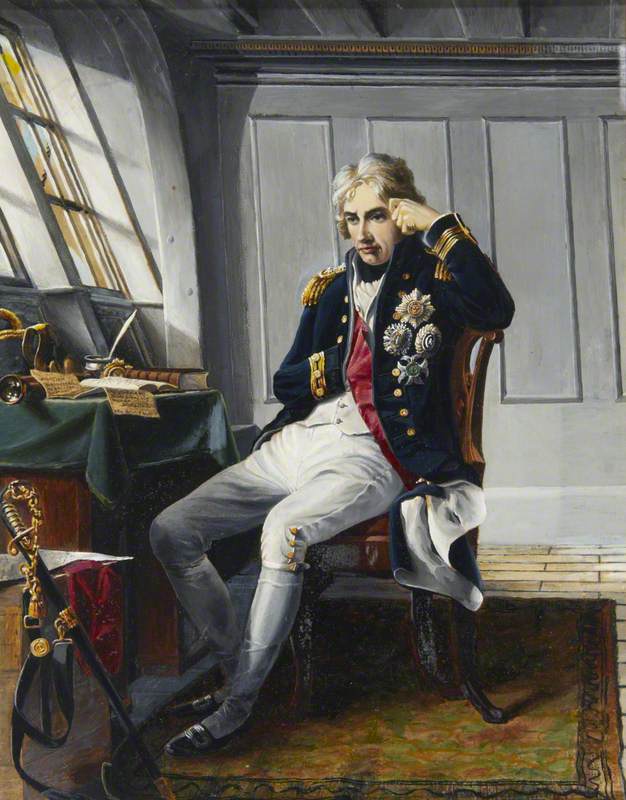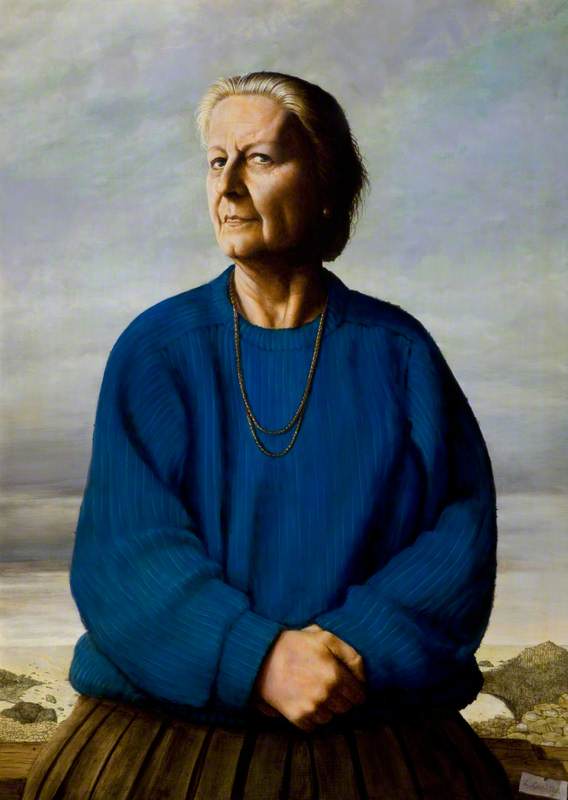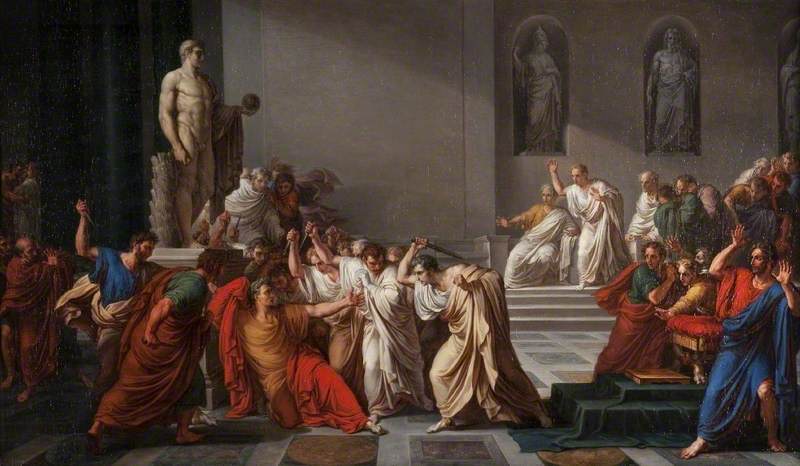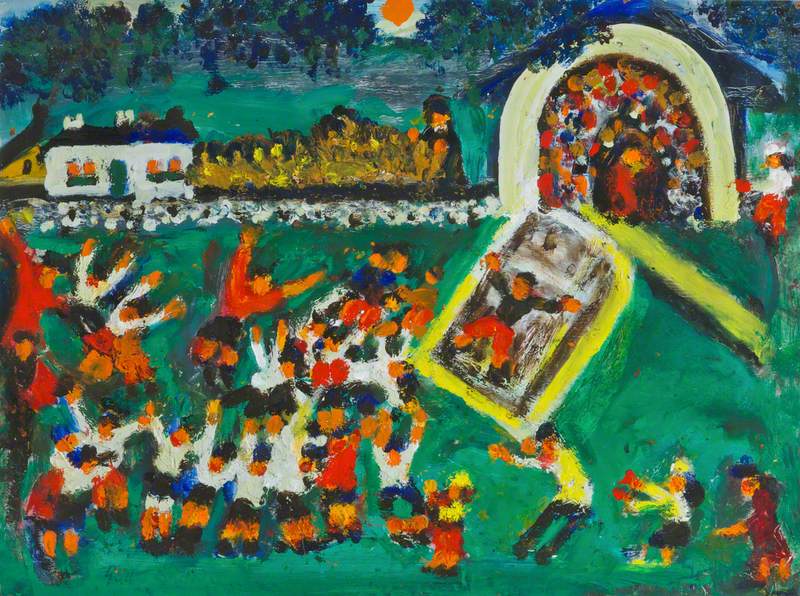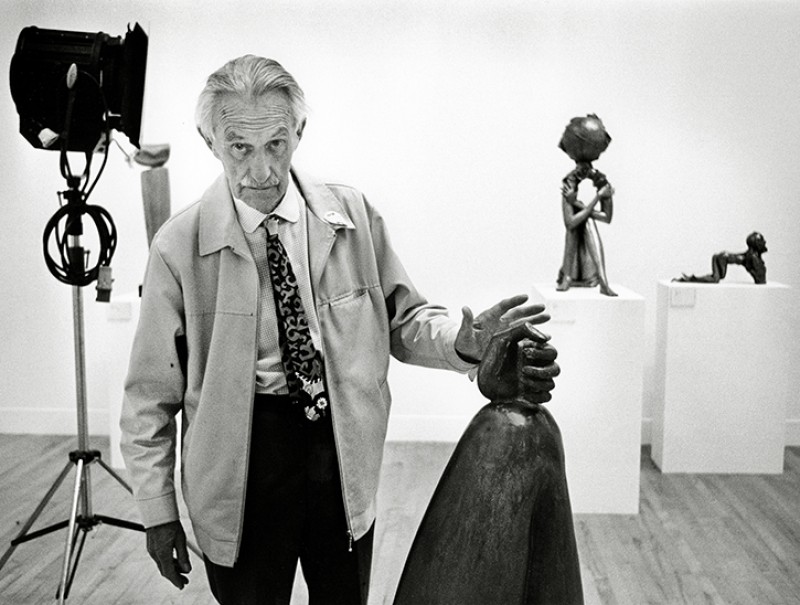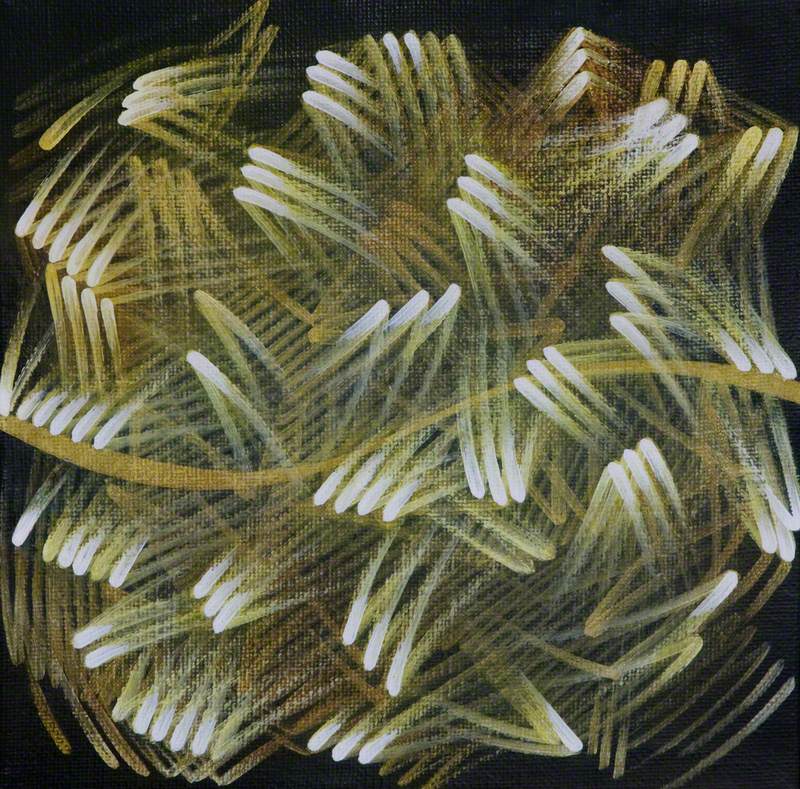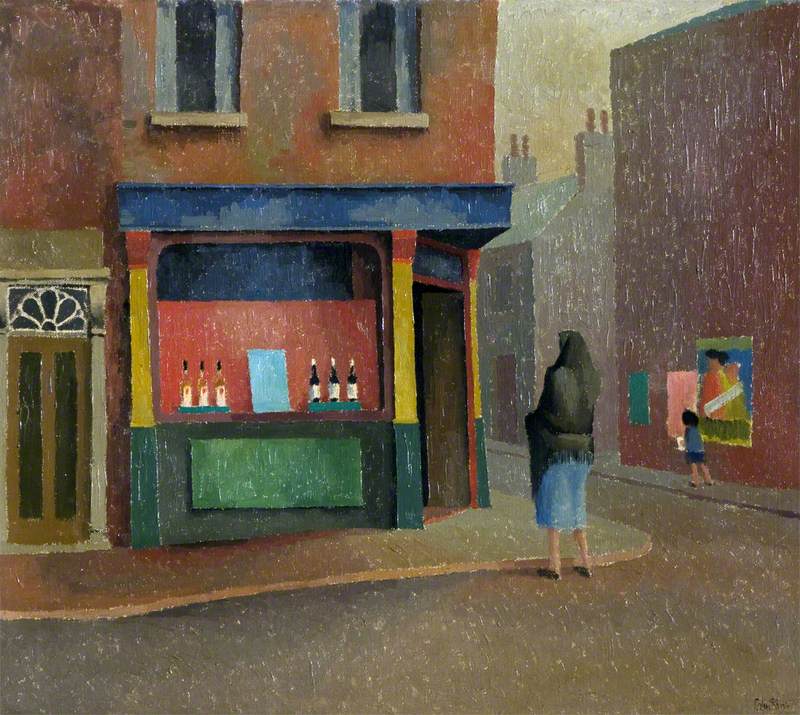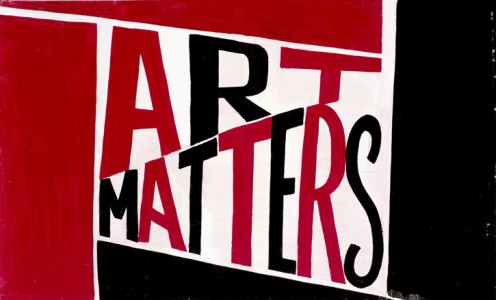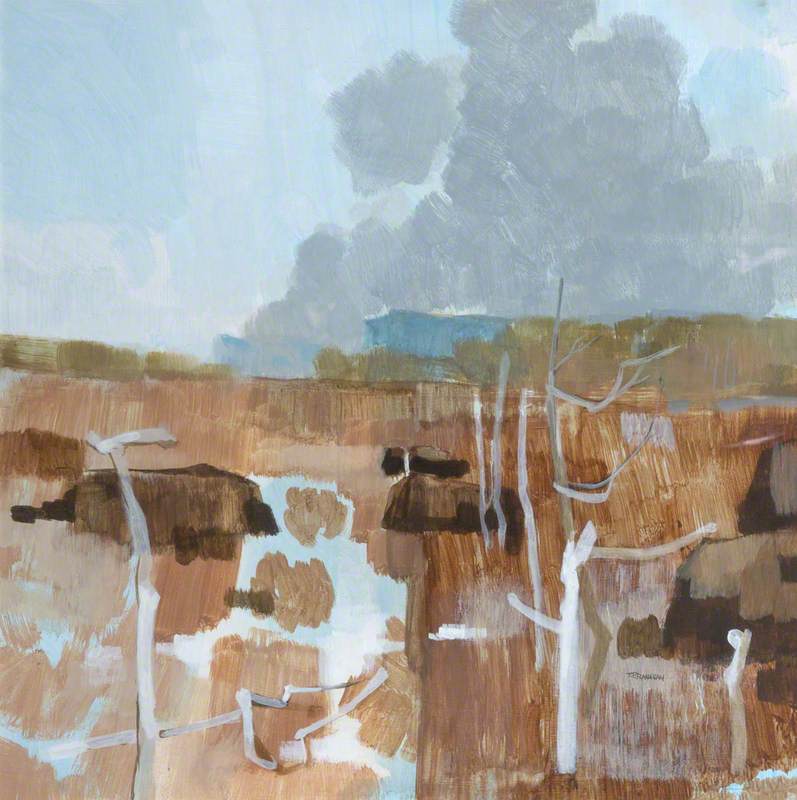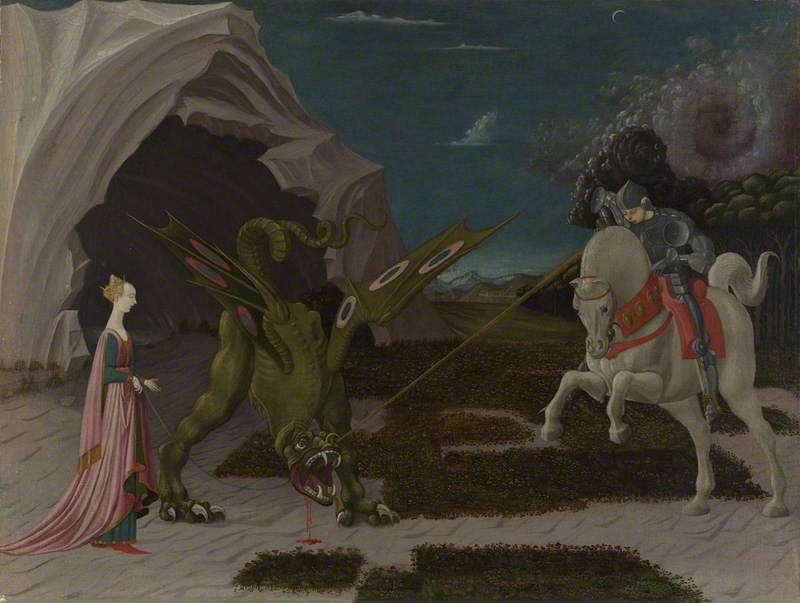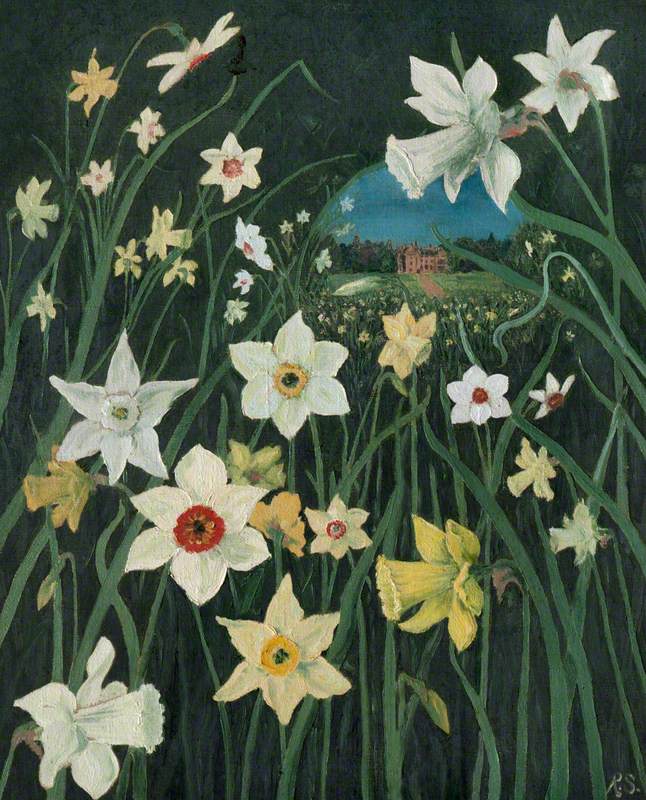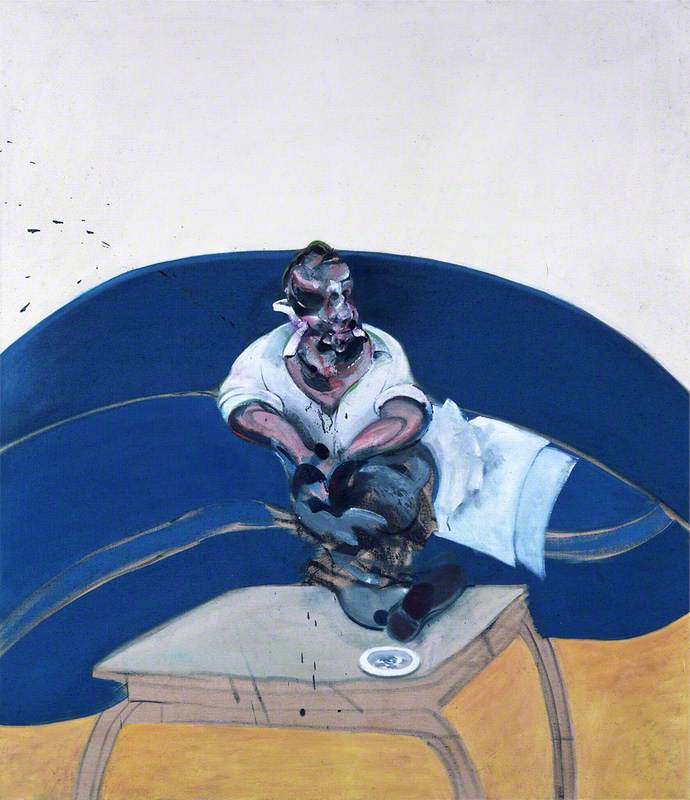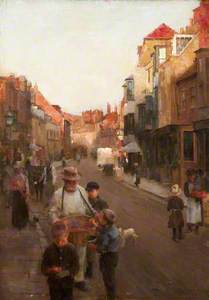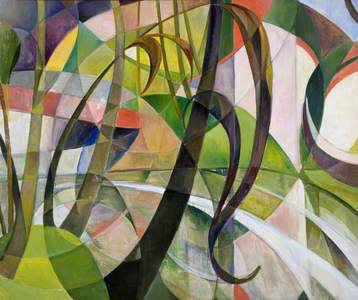'No better way is there to learn to love Nature than to understand Art. It dignifies every flower of the field.' – Oscar Wilde
St Patrick's Day on 17th March is the perfect time to shine a light on artists from Ireland. The island of Ireland has had a turbulent history, and today encompasses both the Republic of Ireland and Northern Ireland. Despite the political division that persists today, art famously has no boundaries – so let's take a look at just some of the incredible Irish artists who have made their mark.
Charles Jervas
Charles Jervas (c.1675–1739) was an Irish portrait painter, translator, and art collector. He studied in London under Sir Godfrey Kneller and went on to become much in demand for his portraits.
This portrait is of Jonathan Swift, the Anglo-Irish satirist probably most famous for being the author of Gulliver's Travels. Born in Dublin to English parents, he became Dean of St Patrick's, Dublin in 1713, and after 1715 he lived mostly in Ireland.
Hugh Douglas Hamilton
Hugh Douglas Hamilton (1739–1808) was born in Dublin where he trained and had early success with crayon and pastel portraits. He later moved to London where his pastel oval portraits were incredibly popular with royalty, politicians and celebrities. In 1779 he travelled to Italy, where he remained for twelve years – he was mainly based in Rome, and knew the sculptor Antonio Canova. John Flaxman suggested he turn his hand to oil painting – he created a series of small oval portraits of Irish and British visitors, including the exiled Charles Edward Stuart (also known as 'The Young Pretender' or 'Bonnie Prince Charlie'). In 1791 Hamilton returned to Dublin. This painting of the Irish revolutionary Lord Edward Fitzgerald dates to 1796.
James Barry
James Barry (1741–1806) Irish painter, active mainly in England. In 1763, in Dublin, he met the Irish-born statesman and writer Edmund Burke, who encouraged him to move to London and financed a lengthy Continental visit (1766–1771), which he spent mainly in Rome. There Barry was overwhelmed by the work of the great masters of the Renaissance, underlining his ambition to paint elevated subjects with moral messages.
Daniel Maclise
Born in Cork, Daniel Maclise (1806–1870) spent almost all of his career in London. He moved there in 1827 to study at the Royal Academy. He was the leading history painter of his period working in Britain. His most prestigious commissions were two enormous murals in the House of Lords – the Meeting of Wellington and Blücher at Waterloo (1861) and the Death of Nelson at Trafalgar (1865). The work above is a sketch for the Death of Nelson that is in Liverpool's Walker Art Gallery, which gives an idea of the original colouring. Talked of in academic circles as 'out and away the greatest artist that ever lived', Maclise's talents extended past his history paintings – he also produced caricatures and conventional portraits, including one of his close friend Charles Dickens.
Joseph Malachy Kavanagh
Joseph Malachy Kavanagh (1856–1918) studied in Antwerp under Verlat in the 1880s. He was noted for painting landscapes, seascapes and rural scenes in Ireland, France and Belgium. He was keeper of the Royal Hibernian Academy. Despite being a prolific painter, his work is rare – his studio and paintings were destroyed by a fire during the Easter Rebellion/Easter Rising of 1916. This single example on Art UK is a landscape of the Curragh in Co. Kildare.
Walter Frederick Osborne
A contemporary of Kavanagh, Walter Frederick Osborne (1859–1903) was an Impressionist and Post-Impressionist landscape and portrait painter. He too studied under Verlat in Antwerp, and was later influenced by the Impressionists. He made his living through portraiture and landscapes, but today he is best known for his depictions of the everyday lives of the working class people of Dublin – including women, children and elderly people. He died from pneumonia at just 43, cutting short what was a glittering career, full of potential.
Roderic O'Conor
Roderic O'Conor (1860–1940) studied in London and Antwerp, and then moved to Paris in 1883. He was greatly influenced by Gauguin and Van Gogh, which you can see in this work, called Field of Corn, Pont Aven, in which he uses non-naturalistic bold colour and thick brushwork. Virtually unknown in the British and Irish art worlds of his own time, after his death he came to be recognised as a pioneer of Post-Impressionism in the English-speaking world.
Sarah Cecilia Harrison
As well as being an artist, Sarah Cecilia Harrison (1863–1941) was part of social reform and women's rights in Ireland. In 1912 she was the first woman to be elected to the Dublin City Council. She also took part in the suffrage victory procession of 1918, escorting Anna Halsam to vote in the General Election.
This portrait is not from life, but of the Belfast-born Irish Republican and industrialist Henry Joy McCracken, who was hanged in 1798 for his part in the Rebellion by the Society of United Irishmen.
Jack Butler Yeats
Jack Butler Yeats (1871–1957) is perhaps the best-known Irish painter of the twentieth century, son of barrister-turned-portrait-painter John Butler Yeats (1839–1922), and brother of the poet William Butler Yeats. He did not regularly paint in oils until about 1905. His subjects included Celtic myth and everyday Irish life, which chimed with the Irish independence movement in the early years of the twentieth century. Influenced initially by French Impressionism, he became more Expressionist as he grew older – his later paintings feature some extremely loose brushwork.
As a boy he had spent long periods with his grandparents in Sligo. When this painting of the Sligo Riverside area was exhibited in Dublin in 1922 the Edwardian costumes and muted colours evoked a sense of nostalgia for the recent past. As with many of Yeats's paintings, it is based on memories of his Sligo childhood, reinterpreted to illustrate universal themes of human experience.
Paul Henry
Born in Belfast, Paul Henry (1876–1958) was noted for depicting the landscape of the west of Ireland in a Post-Impressionist style. In 1898 he went to Paris to study at the Académie Julian and in James Abbot McNeill Whistler's studio – the American artist was an important influence on him. Henry and his wife Grace moved to the island of Achill in 1910 and then to Dublin in 1919. While still married to Grace, he had an affair with Mabel Young (1889–1974) who later became his second wife. He went blind in 1945 and died in 1958.
This picture was probably painted after 1919, when Henry's work became increasingly devoid of figures in the landscape. The composition is simple, with the broad shapes of clouds, mountains, peat stacks and the road emphasised.
Letitia Marion Hamilton
Letitia Marion Hamilton (1878–1964) was landscape artist from Co. Meath. Both she and her sister Eva remained unmarried – their artistic careers helped support the household. Hamilton's early work showed elements of Art Nouveau, and she later worked in a modernist style.
She exhibited more than 200 paintings at the Royal Hibernian Academy (RHA) and travelled widely in Europe. She was one of the founding members of the Society of Dublin Painters, along with Paul Henry, Grace Henry, Mary Swanzy and Jack Butler Yeats. She became a member of the RHA in 1943. In 1948 she won a bronze medal in the last art competition at the modern Olympic Games.
This is The Twelve Pins in Co. Galway, a mountain range also known as The Twelve Bens.
William Orpen
William Orpen (1878–1931) was born in Blackrock, Co. Dublin, and became one of the leading portraitists of his day. A child prodigy, he studied at the Slade School of Fine Art. He worked mainly in London but he kept up links with Ireland, teaching part-time at the Metropolitan School in Dublin in the years before the First World War. He then worked as an Official War Artist in France, and attended the 1919 Peace Conference in Paris, documenting the signing of the treaties.
After the war he continued to earn a huge amount from his works. Apart from portraits, he also painted landscapes, nudes and allegories. He was friends with the Welsh painter Augustus John, and their style was similar in many ways.
This fabulous painting is of St Patrick, Ireland's Patron Saint.
Mary Swanzy
Mary Swanzy (1882–1978) was noted for her eclectic style. Some of her works feature elements of Cubism and Fauvism, and she was one of Ireland's first abstract painters.
Fluent in French and German, she had an international outlook and was influenced by many of the artistic movements of the early twentieth century in Europe. From the 1920s onwards, she travelled further afield, including to Hawaii and Samoa, where she painted local tropical flowers, trees, and native women. She later moved to London, and continued to paint until her death in 1978.
Margaret Clarke
Margaret Clarke (1888–1961) was a key figure in Irish art. Born in Newry, Co Down, in 1905 she won a scholarship to the Dublin Metropolitan School of Art where she studied under William Orpen. She later worked as his assistant. In a long and varied career, she was commissioned to paint portraits of Dermod O'Brien, Irish President Éamon de Valera, Archbishop McQuaid and Lennox Robinson.
This work's title, Strindbergian, refers to the works of Swedish playwright and novelist August Strindberg (1849–1912) – meaning generally dark and dramatic.
Mainie Jellett
Mainie Jellett (1897–1944) was one of the most important pioneers of modern art in Ireland. She was born in Dublin, where she studied at the Metropolitan School of Art and then at the Westminster School of Art in London, where she was taught by Sickert.
After studying in Paris, by 1923 she was painting in a completely abstract, Cubist-inspired style. Initially poorly received in Dublin, she devoted much of her energy to changing conservative attitudes to art in Ireland. She died young of cancer, but the year before her death she became the first chairman of the Irish Exhibition of Living Art, an exhibiting society that became the main venue for avant-garde art in Ireland for years.
Nano Reid
Born in Drogheda, Co. Louth, Nano Reid (1900–1981) specialised in landscape, figure painting and portraits. After training at the Dublin Metropolitan School of Art, she went to Paris in 1927 and attended the Académie de la Grande Chaumière for a few months. After a stint in London attending the Chelsea Polytechnic, she returned to Ireland, and began to exhibit landscape painting at the RHA.
In 1950, Reid and Norah Allison McGuinness were selected to represent Ireland at the Venice Biennale – the first time Irish artists participated in this prestigious exhibition.
Louis le Brocquy
Study towards an Image of James Joyce
c.1977
Louis le Brocquy (1916–2012) 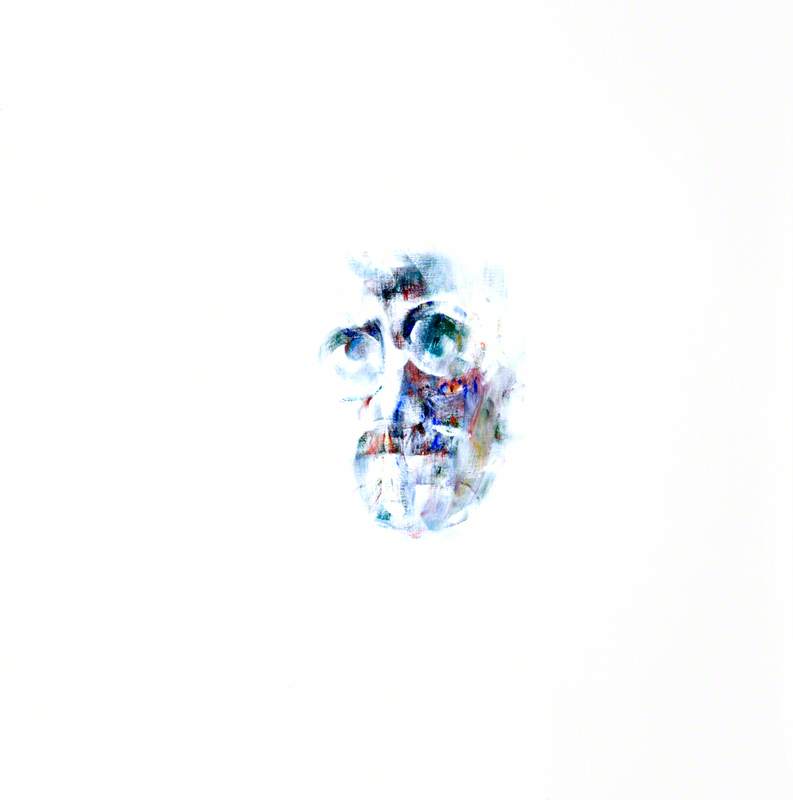
Dublin native Louis le Brocquy (1916–2012) received many accolades in a career that spanned 70 years. In 1956, he represented Ireland at the Venice Biennale.
He is widely acclaimed for his evocative 'Portrait Heads' of literary figures and fellow artists, which include William Butler Yeats, James Joyce, and his friends Samuel Beckett, Francis Bacon and Seamus Heaney. He began painting images of Joyce, one of the greatest figures in twentieth-century literature, in 1964. Although he never knew Joyce, le Brocquy felt bound to him as a fellow Dubliner and painted almost 120 studies towards his image.
Daniel O'Neill
Belfast-born Daniel O'Neill (1920–1974) took life classes at the Belfast College of Art and worked for a short period in the studio of fellow Belfast artist Sidney Smith. His painting career began just as the Second World War broke out. After the 1941 Blitz of Belfast he took to salvaging wood and experimenting with wood carving. In 1949, he visited Paris and was much influenced by the work of the Post-Impressionists. In the early 1950s, O'Neill left Belfast and moved to the village of Conlig, Co. Down where a small-scale artist's colony had evolved – George Campbell and Gerard Dillon also lived there. In 1958 he left Ireland for London and died in 1974.
This image of West Belfast features the distinctive twin spires of St Peter's Cathedral and the Conway Mill.
Andrew Shore, Head of Content at Art UK
